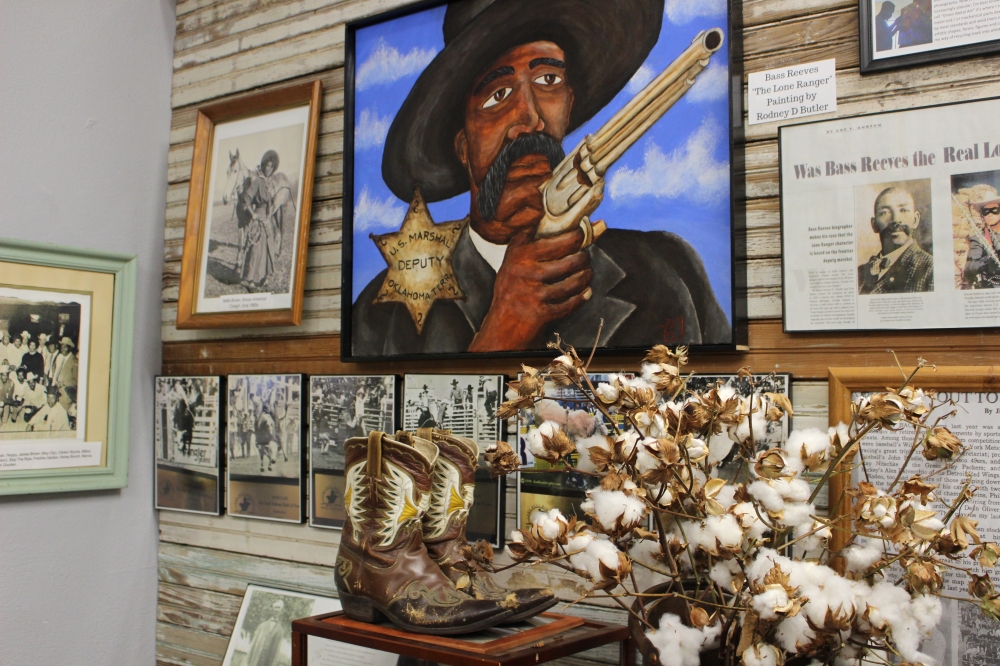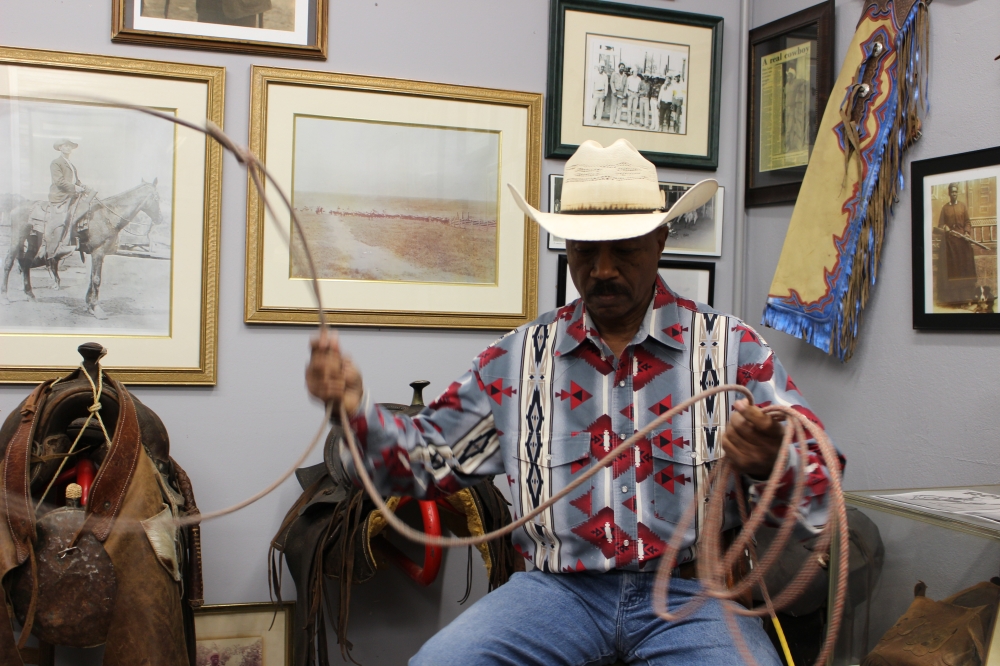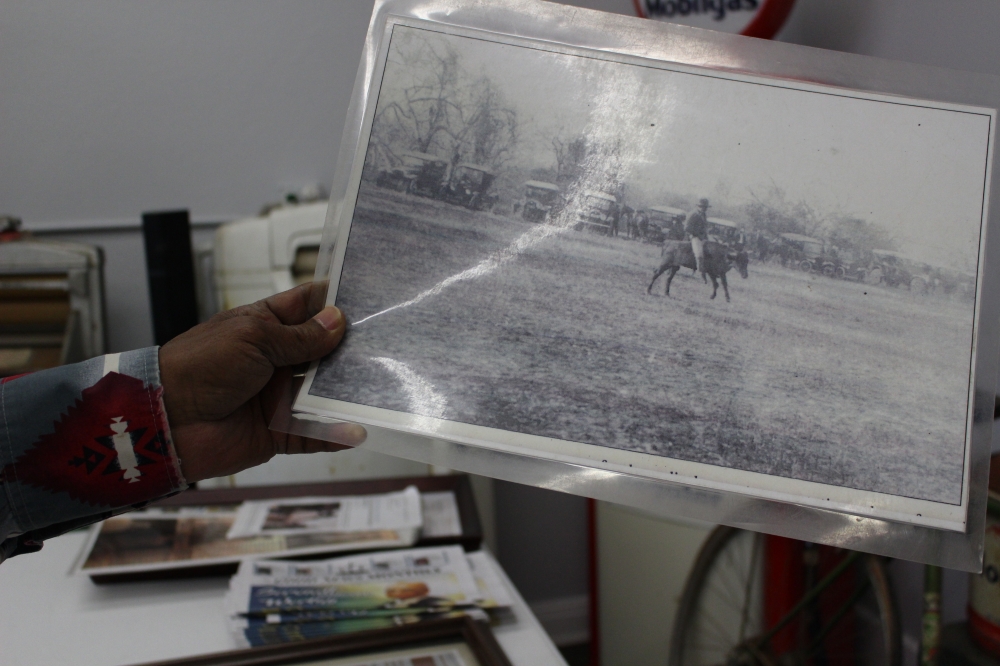The nonprofit, which he established in July 2017, may be small in size—but the memorabilia within tell a hidden truth about centuries of African American influence on overall American culture, as well as the subset cowboy culture of the “Old West,” Callies said.

Callies began to lose his voice in the 1990s due to muscle tension dysphonia, ending his career as a country singer. Years later, he would open the Black Cowboy Museum at what he said was God’s prompting.
“I’m a Christian first, and a cowboy immediately after,” Callies said. “And I know when God closes one door, he’ll open a better one. He opened up this museum.”
Callies said he takes great pride in his heritage as a cowboy. He grew up in El Campo, riding horseback and roping cattle with his cousins, uncle and father.
“I just wanted to be like my daddy,” he said.

The inspiration
In addition to information on America’s Black cowboys, the museum showcases other impactful but lesser-known African American historical figures, such as inventor Lewis Howard Latimer—who worked alongside both Alexander Graham Bell and Thomas Edison during the development of the telephone and the light bulb.
Visitors can also purchase coloring books that highlight more Black inventors and Callies’ biography and memoir, “Here Comes Cowboy Larry, ‘Stepping Out on Faith.’”

He speaks to what he calls the deliberate erasure of the Black cowboy in a 2021 episode of Netflix series, "High on the Hog," which explores the rich tapestry of African American food culture and follows its threads to its origins.
“I didn’t want the Black cowboys to go in vain,” he told interviewer Stephen Satterfield in the episode.
To Callies, being a cowboy is more than a Hollywood film or a costume. It's his father and his grandfather, he said. It’s where he comes from and who he is.
- 1104 Third Street, Rosenberg
- www.blackcowboymuseum.com






